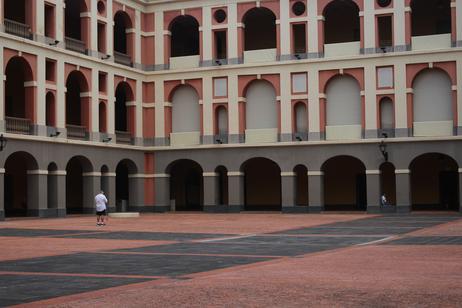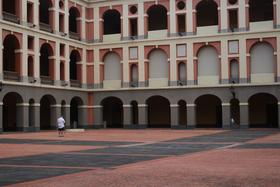Public schools enjoy a long and illustrious history in the United States, with the first schools in the country dating almost as far back as the arrival of the Puritans on U.S. shores. Since that time, the purpose, philosophy, and goals of public education have been examined and debated, up to the development of the public school system still in existence today. How we got to the current point in public education warrants a look back centuries at the very first schools dedicated to educating American youth.
Puritans Recognize Need for Public Education
As early as the 17th century, the need for public education was recognized by the Puritans living on American shores at the time. This population determined education was essential both for teaching basic academic skills and core religious values. Boston Latin School was established as the first public high school in 1635 in Boston, Massachusetts. The school is still in operation to this day.
This video looks at early American education.
The Massachusetts Bay Colony decreed in 1647 that towns of 50 people should have a public elementary school, and those with populations of over 100 should have a Latin school. The primary function of schools at this time was to teach reading so that children learned to read the Bible. Schools also taught Puritan values and basic information about the Calvinist religion, according to Applied Research Center.
Religion Dominates Early Schools
Throughout the 18th century, the focus on schooling was either private or religious in nature. Many of the public schools developed the century prior were replaced by private academies during this era. Some of the early private schools, such as Phillips Exeter Academy, Deerfield Academy, and Phillips Andover Academy, serving only male students, became feeder schools for the Ivy League colleges, according to Wikipedia. Many of these schools became co-educational institutions in the 1970s and are still in operation today.
During this era, Thomas Jefferson called for the establishment of an educational system funded by taxpayer dollars. Jefferson’s plan included a two-track program that divided “the labored and learned.” However, Jefferson’s plans fell to deaf ears at the time, and it wasn’t until the next century that the system Jefferson envisioned came to fruition. Until then, many of the public schools in the 18th century were overseen by ministers and were free to both male and female students. Some received a portion of government funding to help pay for their operations.
Public Education Expands in the 19th Century
During the 19th century, public education began the evolution into today’s system, with a number of public schools cropping up in the 1840s. PBS describes the 19th-century classroom as a sparse facility, depicting the prevalence of frugality within the agricultural community of the time. Learning tools consisted of slates and chalk, as well as a handful of school books. Oral examinations and recitations were a common daily occurrence. A single teacher taught children of all ages and abilities.
Schooling was a community-wide effort, with residents of the community taking turns providing supplies like firewood, building desks for the students and cleaning the stable where the horses that students rode to school were kept during the day. Even the teacher of the school, who was generally a young, unmarried woman, was cared for by the community, frequently staying in the homes of local families, and rotating locations as needed.
This video describes teaching in an early classroom.
Horace Mann, who became the Massachusetts Secretary of Education in 1837, was instrumental in the establishment of a broader network of public schools. Mann focused on training teachers and expanding elementary education to all students. Mann also established the system of separating students by age and grade, which eventually eliminated the multi-grade classroom. Mann’s “common school” movement caught fire in the northern states but did not spread to the southern region until approximately the turn of the century. At that point, 34 states had established compulsory schooling laws that required students to attend school until a particular age. In most states, that age was 14. Four schools in the south adopted similar education laws.
Segregation Key Issue in 20th Century Schools
At the end of the 19th century, the U.S. Supreme Court issued a decision in Plessy v. Ferguson, which allowed the state of Louisiana to offer “separate but equal” railroad cars to black and white passengers. The idea also trickled into public education, as separate schools were set up for black children and white students. Eventually, racial segregation in public schools becomes a federal mandate, with “black” schools frequently receiving less funding than schools in wealthier white communities.
It was not until 1954 and the U.S. Supreme Court ruling in Brown v. Board of Education, that desegregation became the new buzzword in public education. The ruling stated that segregation of schools was “inherently unequal” and had to be abolished. Despite the ruling, it took many school districts a number of years to do away with segregation completely. Today, some would argue that segregation is still in effects, simply based on the way schools are zoned. However, public schools are no longer able to discriminate against students, based on their race or their gender.
Public Schools in the 21st Century
Today’s schools look very different from those early schoolhouses of the 19th century. School buildings are filled with multiple classrooms for students to be separated by grade, class, and ability. Technology has seeped into all corners of the public school, as students learn to prepare for the new workforce. Many issues still surround public schools today, and the system is far from perfect. However, the dramatic evolution of public education in the U.S. demonstrates the country’s dedication to educating all citizens for a successful, prosperous republic.
Questions? Contact us on Facebook. @publicschoolreview














